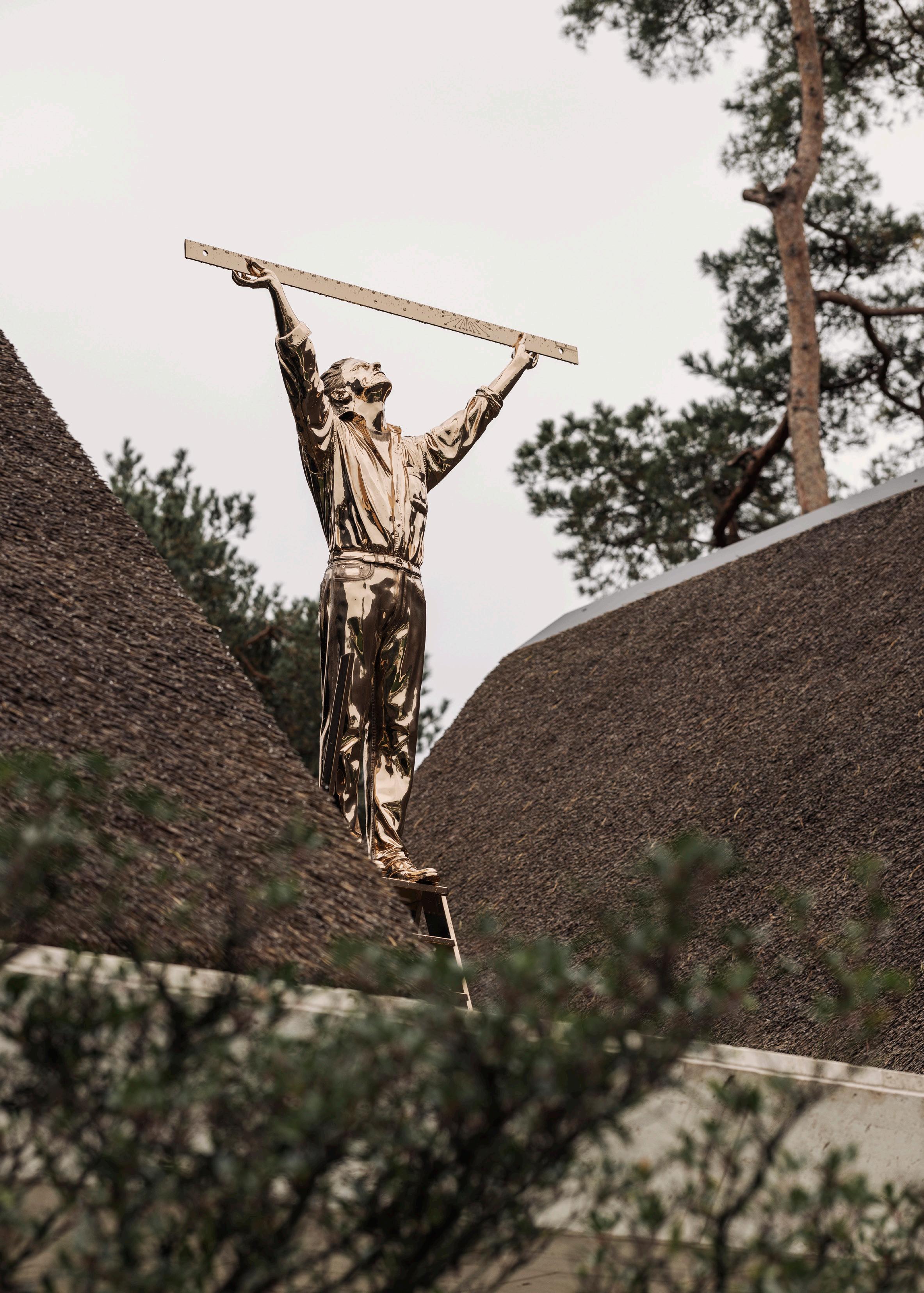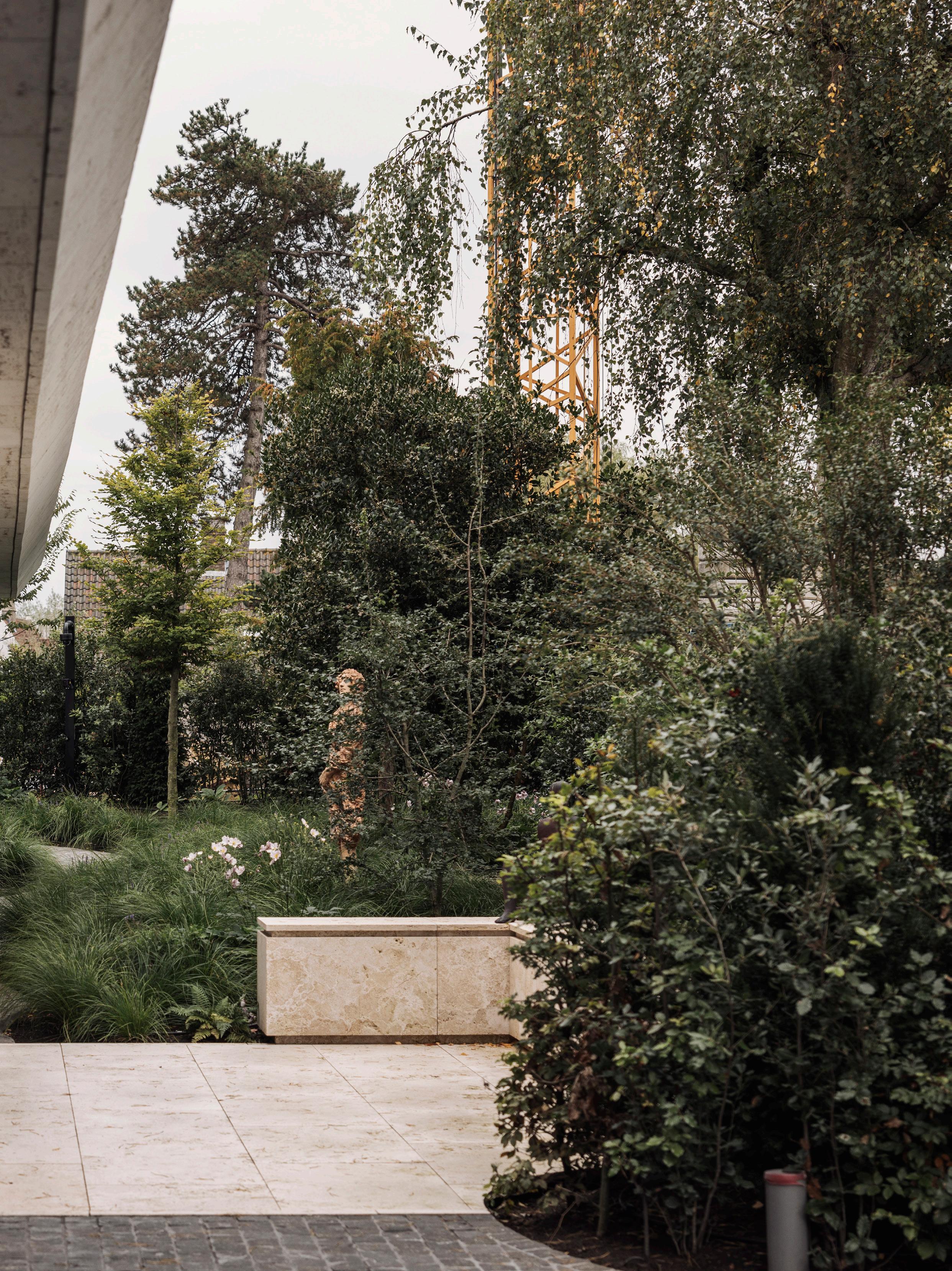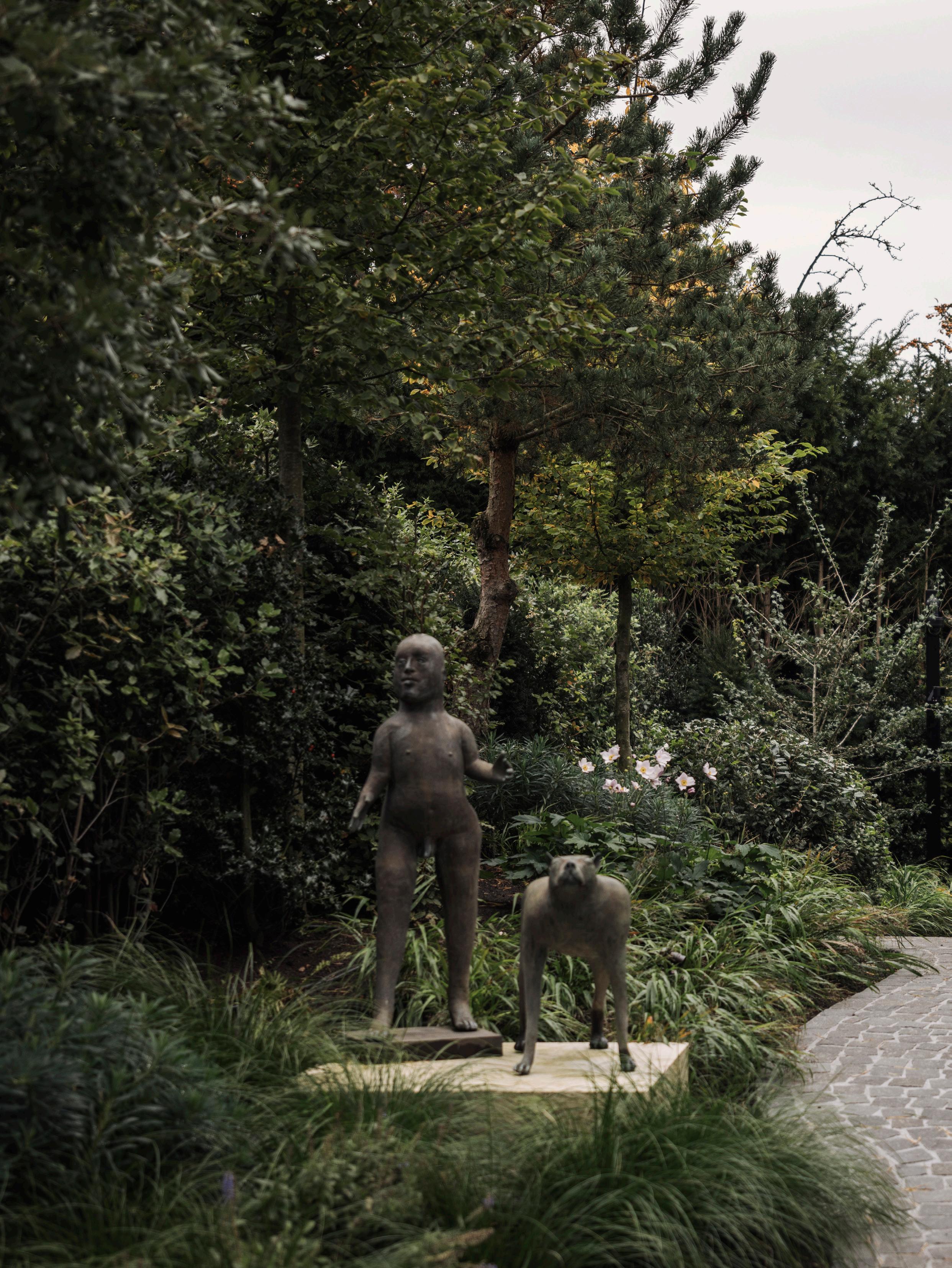
6 minute read
This Modern Art Collector Is On Belgium's Coast
LOCATION Knokke, Belgium ARCHITECTURE Hans Christian Demyttenaere INTERIOR DESIGN Arjaan De Feyter LANDSCAPE DESIGN Dominique Eeman PHOTOGRAPHY Tijs Vervecken WORDS Alexia Petsinis
A home on the Belgian coast conceptualised around a modern art collection unites interior, exterior and landscape design to inspire a sense of artistic intrigue from the outside in.
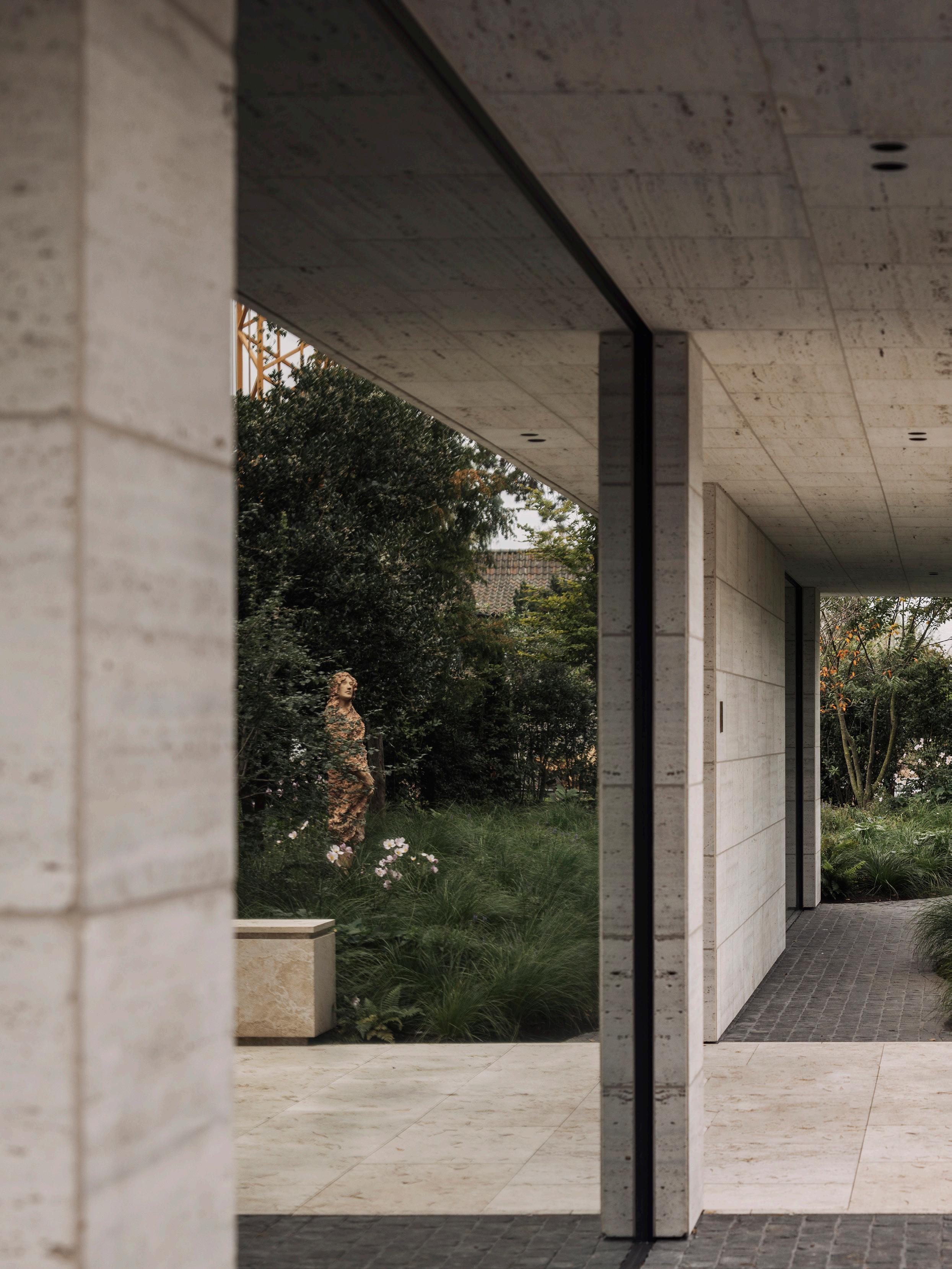

“Atypical” is how architect Hans Christian Demyttenaere describes this home in the Belgian coastal municipality of Knokke. Designed in collaboration with interior architect Arjaan De Feyter and landscape architect Dominique Eeman, ‘Art Residence‘ responds to an art collector client’s brief for a private gallery that felt like an intimate refuge.

As the trio reflects, the residence, completed in 2024, exemplifies experiential or even “entertainment” architecture, facilitating artistic discoveries throughout its interior spaces and exterior surrounds. Yet, despite this approach, the home and its gardens maintain a sense of modest refinement, ensuring the art is always the focal point.

Art Residence was certainly not the average brief for Demyttenaere, De Feyter, and Eeman. The trio embraced the project enthusiastically, seeking a balance between visually enticing interior, exterior, and landscape designs, and an overall concept that ensured sizeable works of art would be seamlessly integrated into the living environment with maximum impact. The art is part of daily life; be it exchanging a morning glance with Gustave de Smet's Self Portrait, chatting around the dinner table with Constant Permeke’s expressionist landscape as a talking point or encountering sculptures by Jan Fabre and Rik Poot while strolling around the gardens.
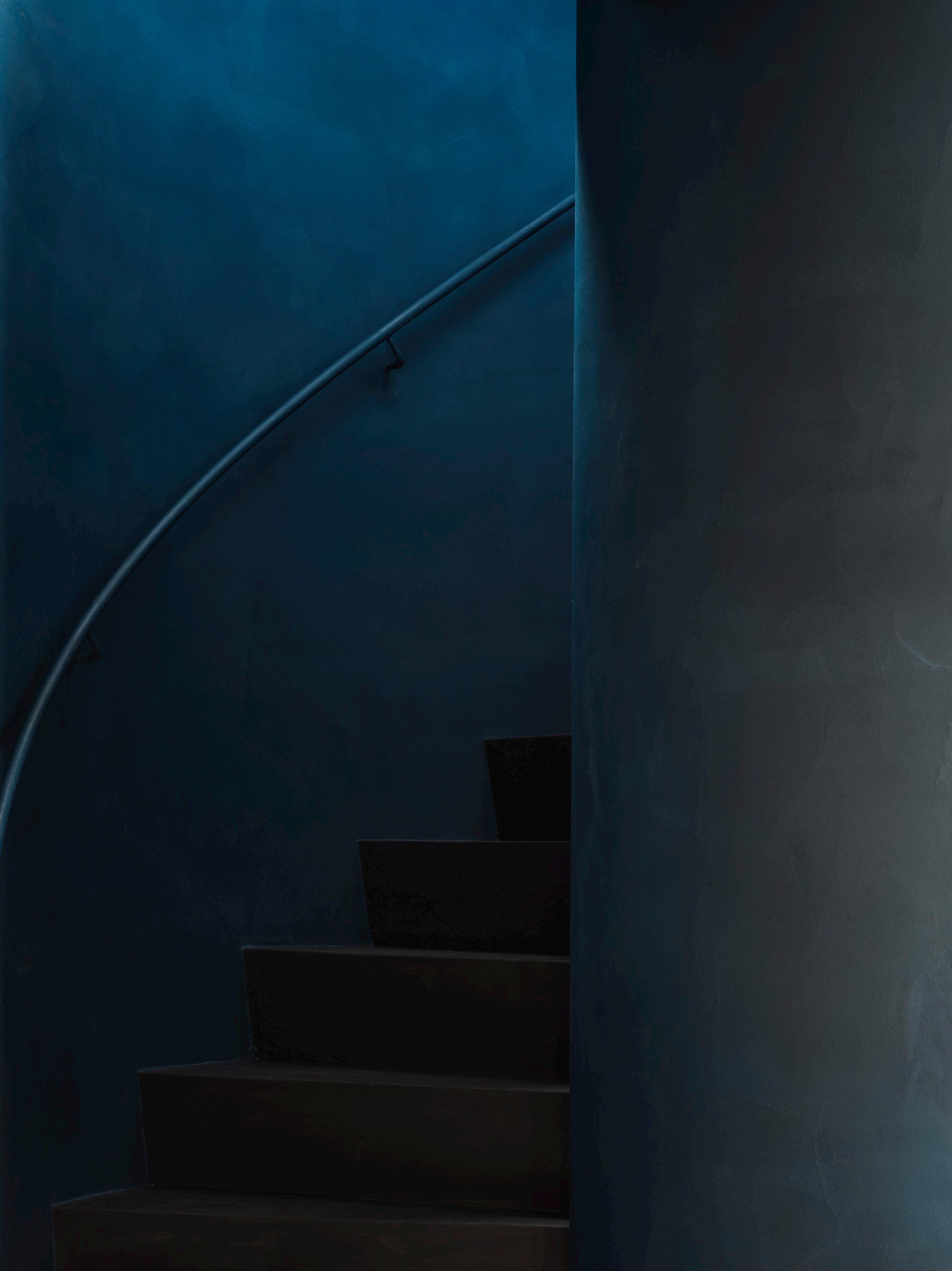
With a thatched roof and crossed awnings, the new pavilion has an unusual exterior form that Demyttenaere describes as an “iconic, expansive construction.” Made entirely from sand-coloured Pietra Bicci natural stone, the structure reflects a sense of refined contemporary minimalism, with a nod to the site’s heritage and cultural context. Transposing this idea of undefined forms into his interior scheme, de Feyter explored a series of round and curved elements that seamlessly divide the residence’s spaces; a central feature bar of monumental proportions, curtain-like natural stone walls, and a custom-made blue steel staircase that spirals upwards like a sculpture in its own right. Known for his architectural approach to interiors inspired by a “fondness for purity,” de Feyter’s interior design for Art Residence focused on the quality of the human experience inside the pavilion.
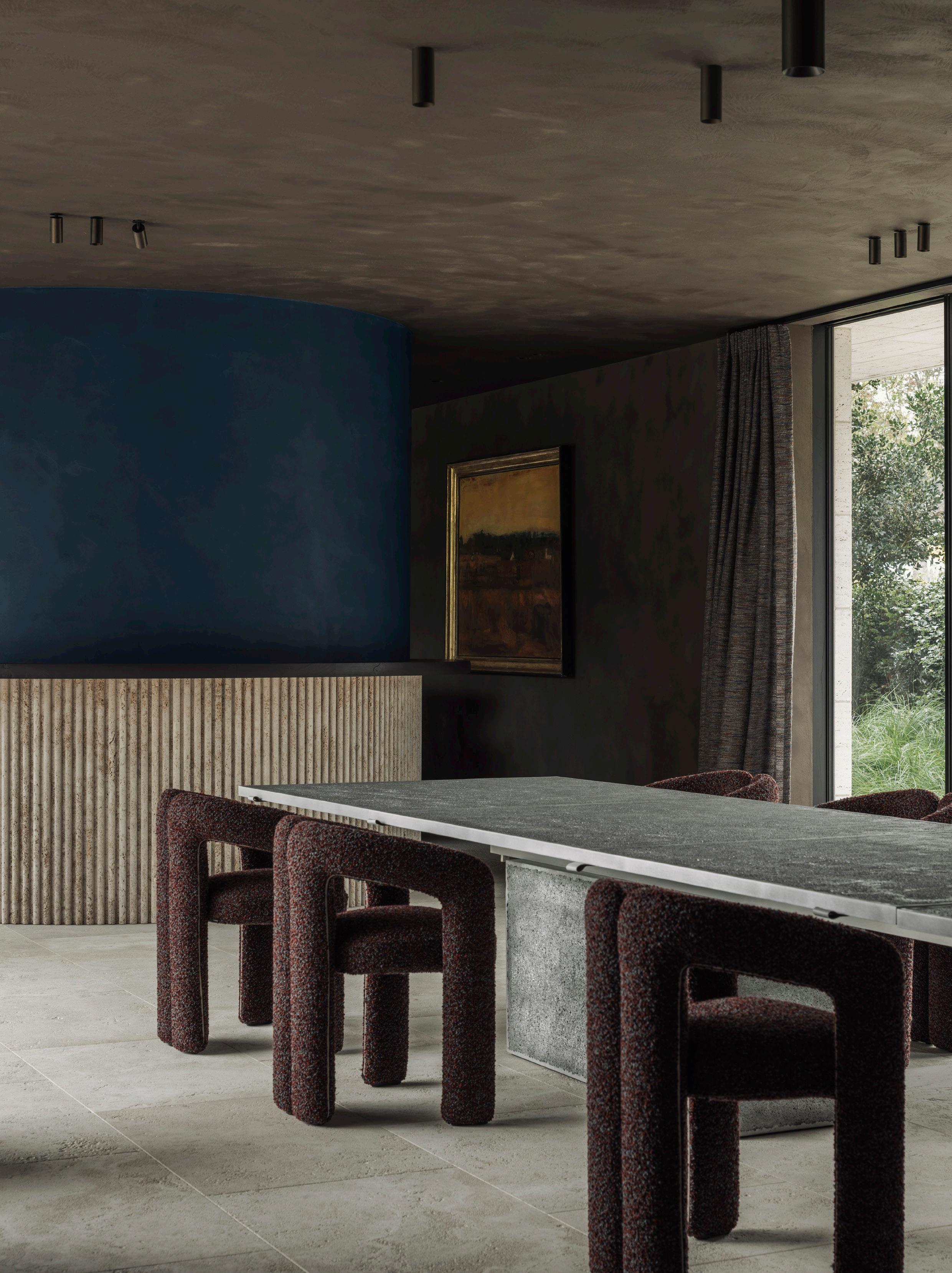
“The residence reflects the power of detail and application of refined craftsmanship, a strong extension of materials and use of colour, and an uncompromising design concept. It has a very strong sense of space and experience. It reflects the purity in human living,” de Feyter says.
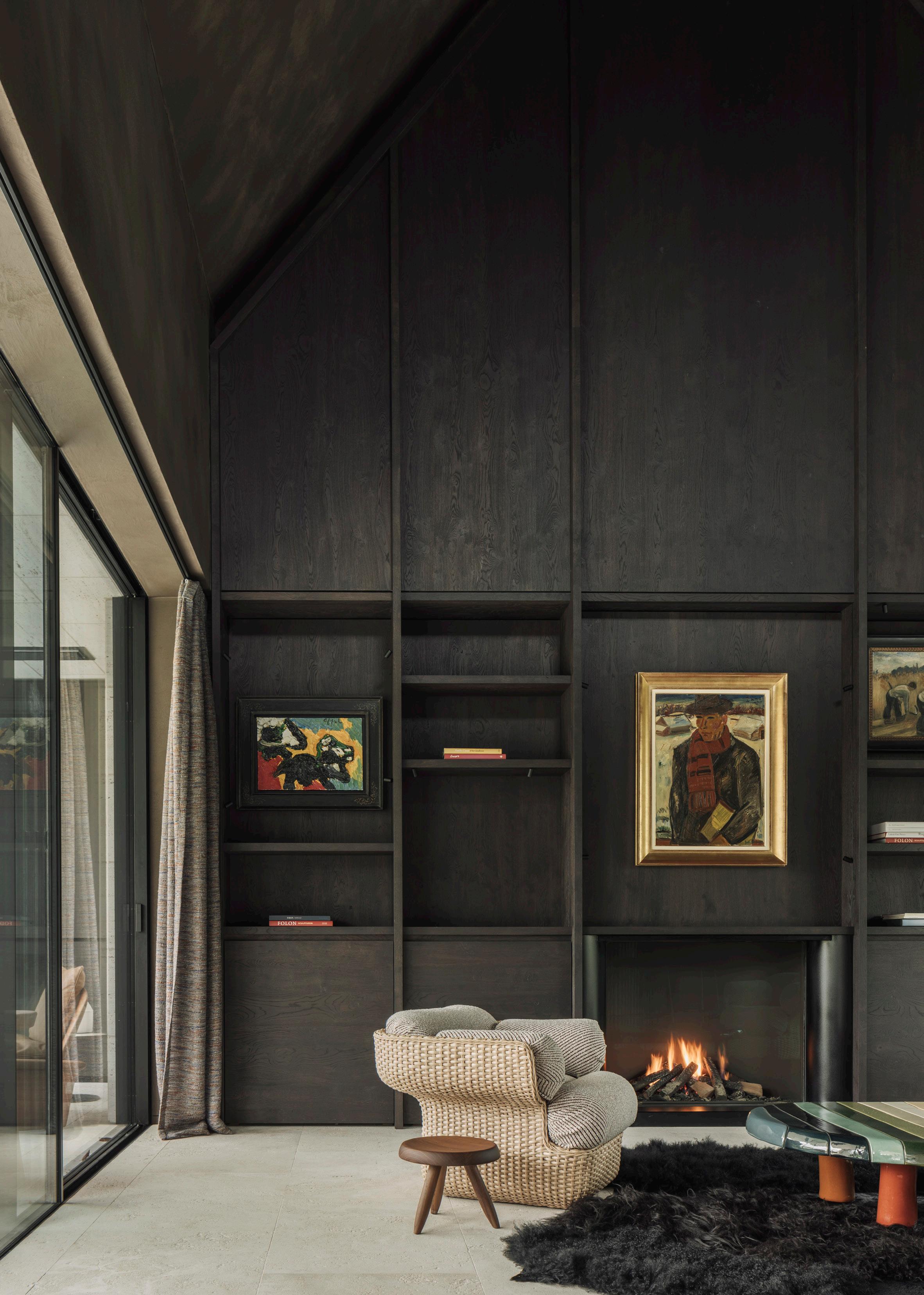
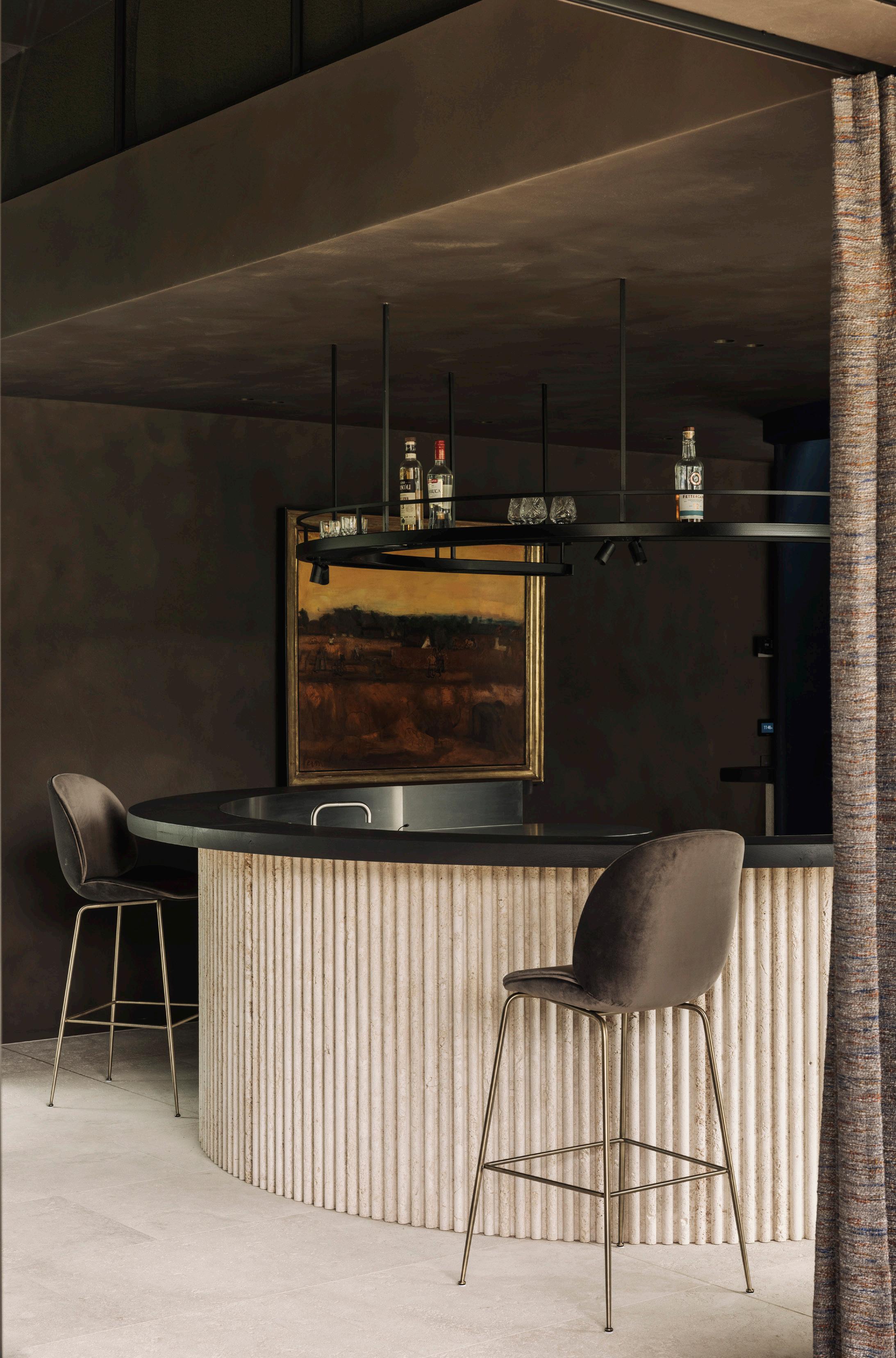
A dark interior palette featuring deep browns and blue offset the residence’s artworks, creating an ambience tinged with drama. de Feyter’s focus on materiality enhances this atmosphere, with stripe Pietra Bicci stone walls, the bar’s brushed stainless-steel countertop, and custom oak veneer millwork. The colours, forms, and textures of modern and contemporary furniture punctuate the pavilion’s living and dining spaces, including an aluminium foam dining table by Stijn Dhondt, Cassina Dudet dining chairs by Patricia Urquiola, a red Tacchini Costela lounge chair, and GUBI Beetle bar stools by GamFratesi.
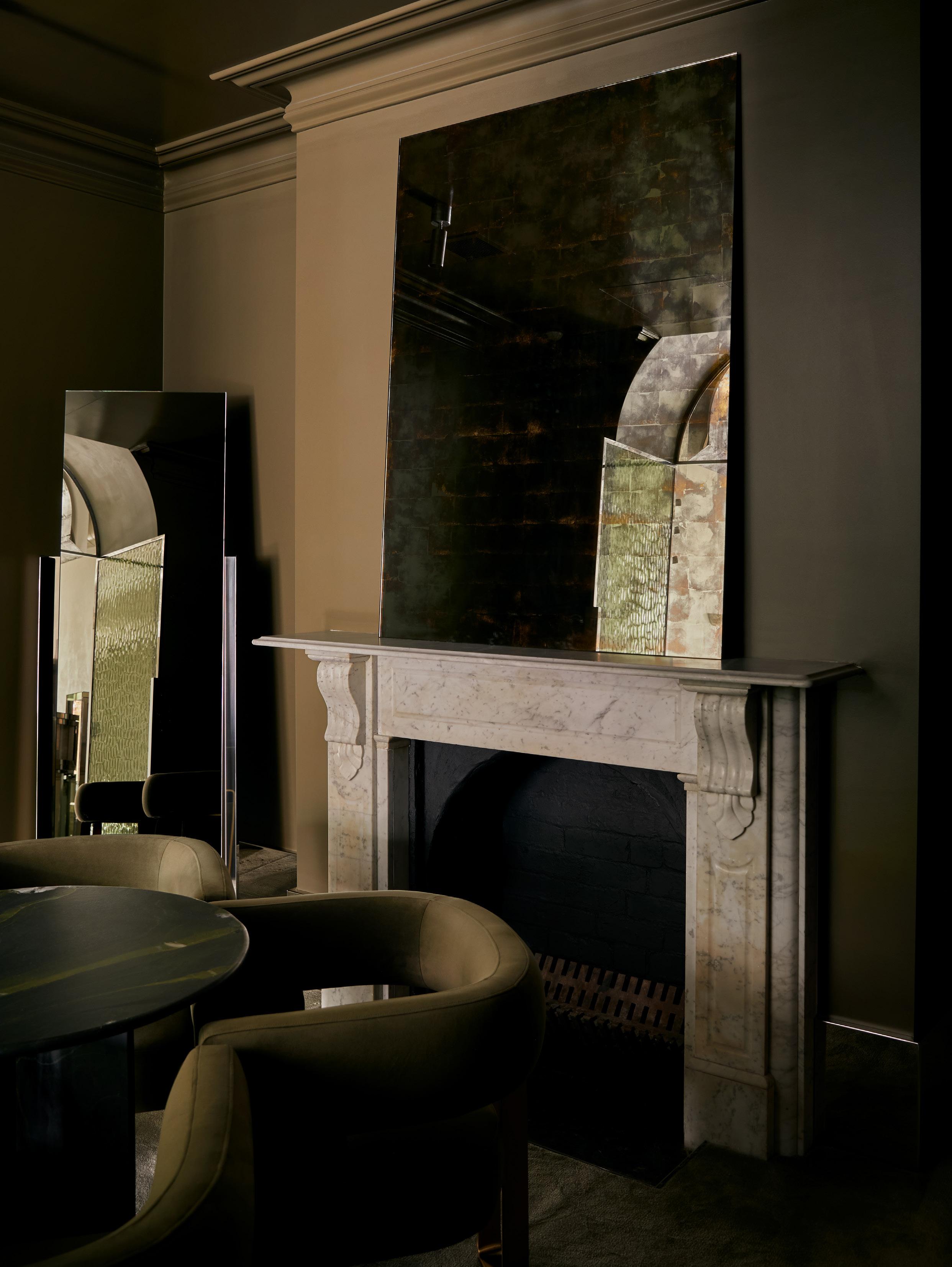
Outside, Dominique Eeman’s garden and landscape design contrasts with the residence’s architecture and material character, with basalt cobblestone walking paths, and grasses and hedges Eemaan describes as a “discreet, green cloth around the works of the pavilion.” The subtle modesty of the design also ensures the art is as much of a focus outdoors as it is inside the pavilion. Paths meander around life-sized sculptures by artists such as Henk Visch and Jean-Michel Folon; their metallic materials gleaming against the garden’s neutral stone and green palette.

Whether perceived as an architectural folly or an unconventional example of contemporary experiential design, Art Residence blurs the lines between aesthetics and functionality, and art and architecture, redefining not only how humans experience art, but how one can live with art in the most intimate of contexts.
